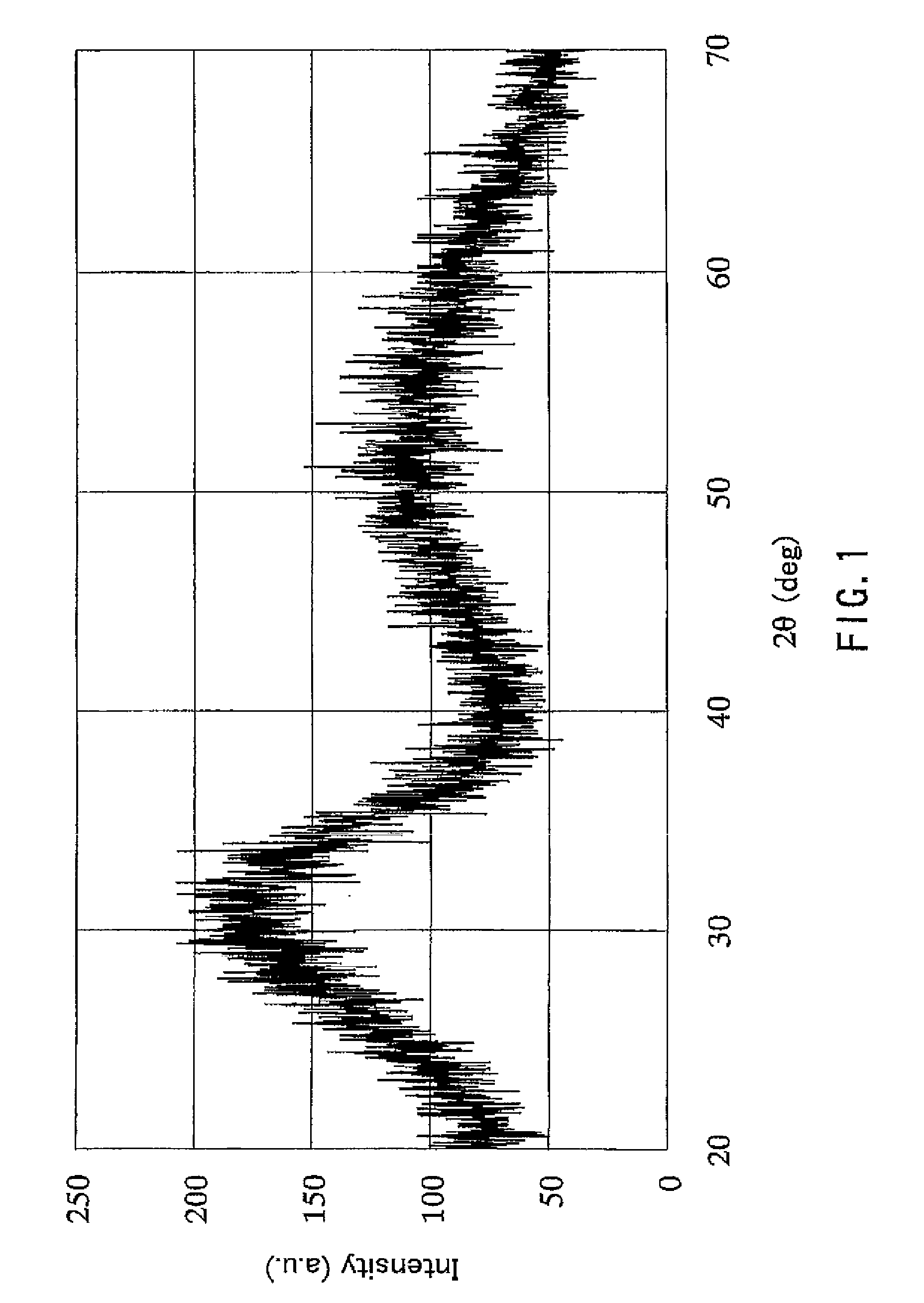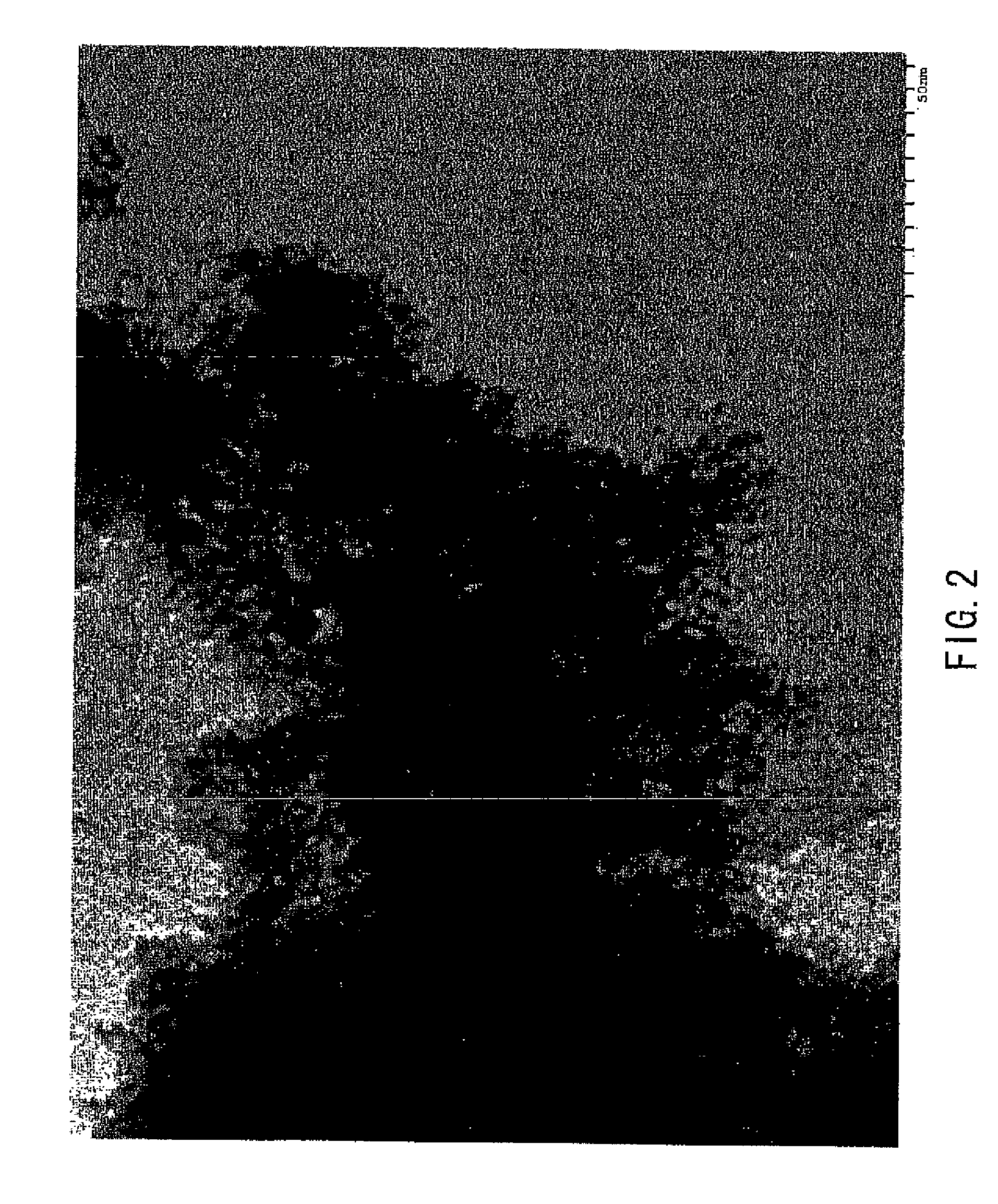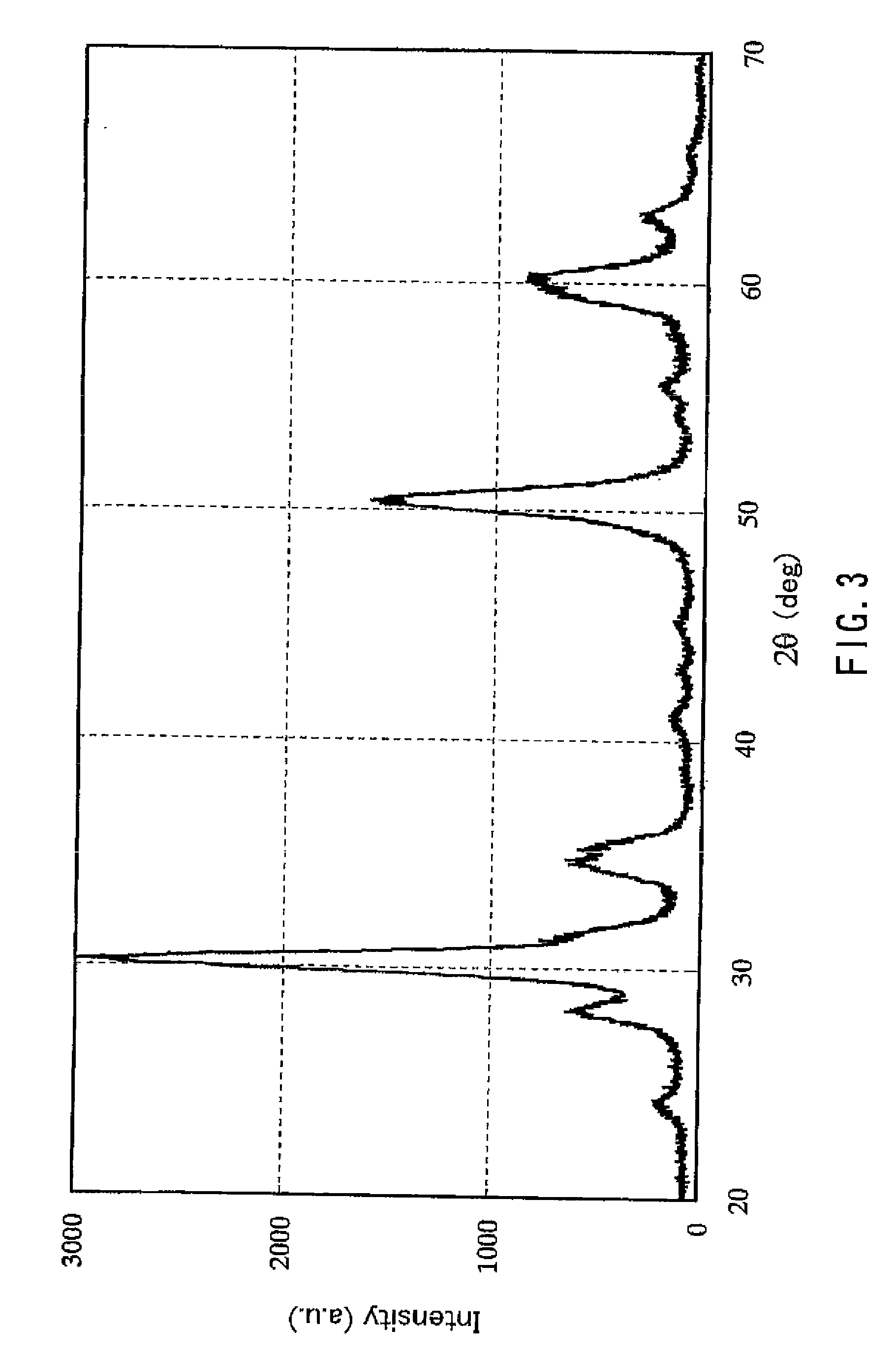Zirconium oxide hydrate particles and method for producing the same
a zirconium oxide and hydrate technology, applied in the field of can solve the problems of reducing the amount of water of adsorption and water of crystallization, difficult to obtain uniform fine particles, and difficult to obtain zirconium oxide hydrate particles, and achieve the effect of high proton conductivity
- Summary
- Abstract
- Description
- Claims
- Application Information
AI Technical Summary
Benefits of technology
Problems solved by technology
Method used
Image
Examples
embodiment 1
[0018]First, the zirconium oxide hydrate particles of the present invention shall be described. A feature of the zirconium oxide hydrate particles of the present invention is that the zirconium oxide hydrate particles are represented by the formula ZrO2.nH2O, the mean primary particle size of the particles is 0.5 nm or more and 5 nm or less, and “n” in the formula represents a number greater than 2.5 and is a value measured after the particles are dispersed in water, filtered and then dried in air at 60° C. for 6 hours.
[0019]The mean primary particle size is 0.5 nm or more and 5 nm or less, and preferably 1 nm or more and 3.5 nm or less. When the mean primary particle size exceeds 5 nm, the specific surface area of the particles is decreased and the amount of water of adsorption is decreased, resulting in a decreased total amount of water of hydration. Since the lattice constant of zirconium oxide is about 0.5 nm, it is difficult to produce the aforementioned zirconium oxide hydrate...
embodiment 2
[0024]Next, the method for producing zirconium oxide hydrate particles of the present invention shall be described. A feature of the method for producing zirconium oxide hydrate particles of the present invention is the inclusion of the steps of preparing zirconium oxide hydrate particles by adding an aqueous zirconium salt solution to an aqueous alkaline solution while controlling the pH to 7.0 or more and 13.0 or less, and subjecting the zirconium oxide hydrate particles to a hydrothermal treatment in the presence of water at a temperature of 50° C. or more and less than 110° C. for 3 hours or more.
[0025]According to the production method described above, ultrafine particles of a zirconium oxide hydrate having a mean primary particle size of 5 nm or less and a large amount of water of hydration that has been considered as being difficult to produce can be obtained. That is, the zirconium oxide hydrate particles produced according to the production method described above have a uni...
example 1
[0048]An aqueous ammonia solution used in this example was prepared by mixing 15.12 g of a 28% aqueous ammonia solution with 300 mL of water. Separately from this aqueous ammonia solution, an aqueous zirconium salt solution was prepared by dissolving 8 g of zirconium oxychloride octahydrate in 100 mL of water (solution preparation step).
[0049]Next, the aqueous ammonia solution was stirred while the aqueous zirconium salt solution was added dropwise thereto, thereby generating a precipitate containing zirconium oxide hydrate particles (precipitation step). The aqueous zirconium Bait solution was completely used in this dropwise addition. The pH of the suspension containing this precipitate was 11.8. This precipitate was aged at 25° C. for 15 hours in the state of a suspension (aging process). The pH of the suspension after 15 hours was 11.3.
[0050]Then, the suspension containing this precipitate was introduced into an autoclave and subjected to a hydrothermal treatment at 100° C. for ...
PUM
| Property | Measurement | Unit |
|---|---|---|
| mean primary particle size | aaaaa | aaaaa |
| mean primary particle size | aaaaa | aaaaa |
| mean primary particle size | aaaaa | aaaaa |
Abstract
Description
Claims
Application Information
 Login to View More
Login to View More - R&D
- Intellectual Property
- Life Sciences
- Materials
- Tech Scout
- Unparalleled Data Quality
- Higher Quality Content
- 60% Fewer Hallucinations
Browse by: Latest US Patents, China's latest patents, Technical Efficacy Thesaurus, Application Domain, Technology Topic, Popular Technical Reports.
© 2025 PatSnap. All rights reserved.Legal|Privacy policy|Modern Slavery Act Transparency Statement|Sitemap|About US| Contact US: help@patsnap.com



